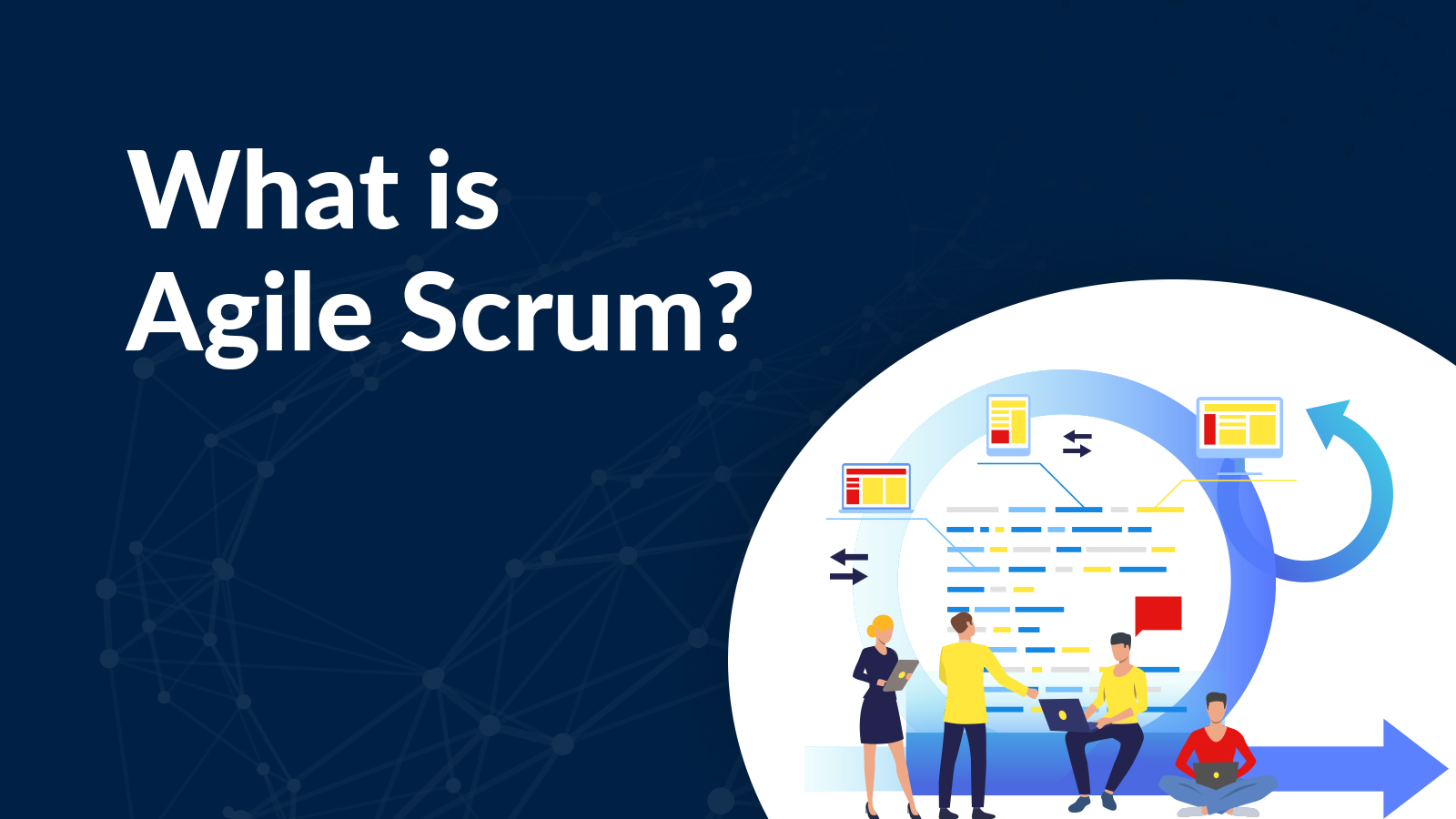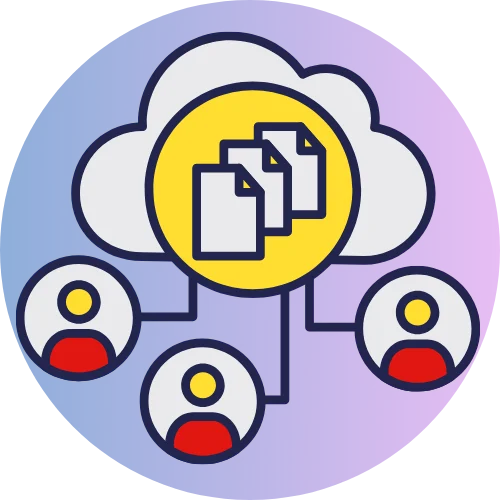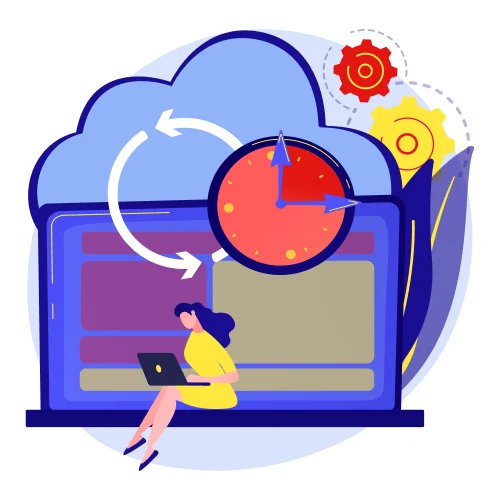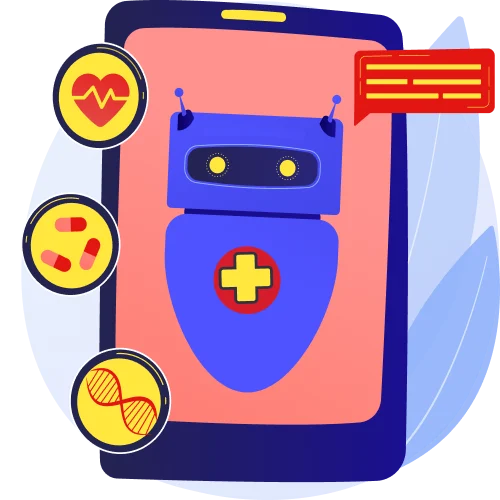What is Agile Scrum? Scrum overview for Agile software development. Here we discuss in detail how agile scrum helps your organization and the main components of the scrum.
What is Agile Scrum?
Agile Scrum is a framework in which people can address complex problems with an adaptive approach. Therefore, this is, achieved while creating productive and creative products of the highest possible value.
Scrum is:
- Lightweight
- Simple to understand
- Difficult to master
Scrum is a framework within which one can design and implement various processes and techniques to manage complex projects. Hence, scrum clarifies the intended result of your product management and work techniques. So that you can continuously improve the product, the team, and the work environment.

History of Agile
17 people with varied backgrounds in software development came together one day to see whether there was a way to speed up the development process while reducing the amount of documentation required.
Before, software development took forever, and the business had, already moved on, and altered its needs, by that point when projects were, ready to be delivered. No business demands could be, met by this initiative, no matter how well the project met its stated objectives.
As a result of this discussion, the “agile manifesto” was born, which we’ll cover in more detail in the next tutorial in this series.
We see a very different kind of agile in the workplace today compared to what was born that day. Experts agreed on a ‘lightweight’ and ‘quick’ methodology. It was, agreed at this conference that the keys to successful software development were faster delivery of a product and regular feedback.
We couldn’t get, any input until the final product was, ready to be, delivered with the existing waterfall processes. This meant that there was, no way for the consumer to see how the project was, progressing until the entire product was, finished. Experts hoped to avert this outcome.
As a result, they sought a solution that would allow for constant feedback to minimize the expense of rework later.
What does the Scrum framework consist of?
- Roles
- Events
- Artifacts
- And Rules
Thus, each component serves its purpose for Scrum’s success and proper usage.
What is the potential use of Scrum?
Scrum framework manages and designs products, and it is, used worldwide for:
- You can, Research and identify feasible markets, technologies, and product capabilities;
- Here, you can develop products and enhancements;
- Also, you can Release products and their enhancement as frequently and many times a day;
- Here, you can develop a cloud (online, secure, on-demand) and another environment for product use;
- Also, you can sustain and renew products.
Scrum develops software, hardware, autonomous vehicles, schools, government, marketing, and operations. Also, almost everything we use in our daily lives as individuals or as a society.
Since technology, market, and other complexities and their interaction have rapidly increased, scrum has overcome them all and become the prior choice of many organizations.
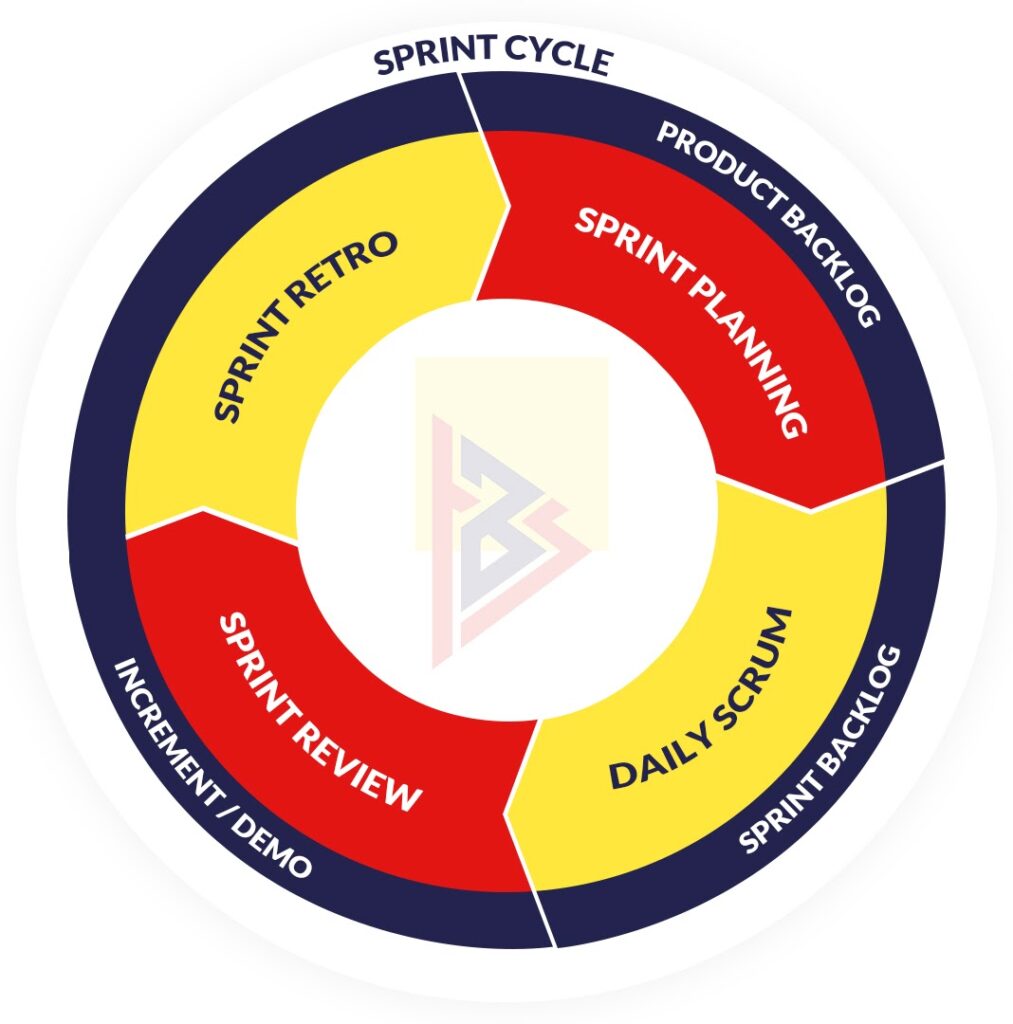
Agile Challenges
Until the finished product was ready to be, delivered, there was, no way to provide feedback using the existing waterfall processes. The waterfall approach got its name because teams worked in stages, completing each step before moving on to the next.
This meant that there was, no way for the consumer to see how the project was, progressing until the entire product was, finished. Experts hoped to avert this outcome. As a result, they sought a solution that would allow for constant feedback to minimize the expense of rework later.
As a result, being agile means not only being responsive to input and delivering quickly but also being adaptable and improving over time.
Difference between Agile and Scrum Methodology
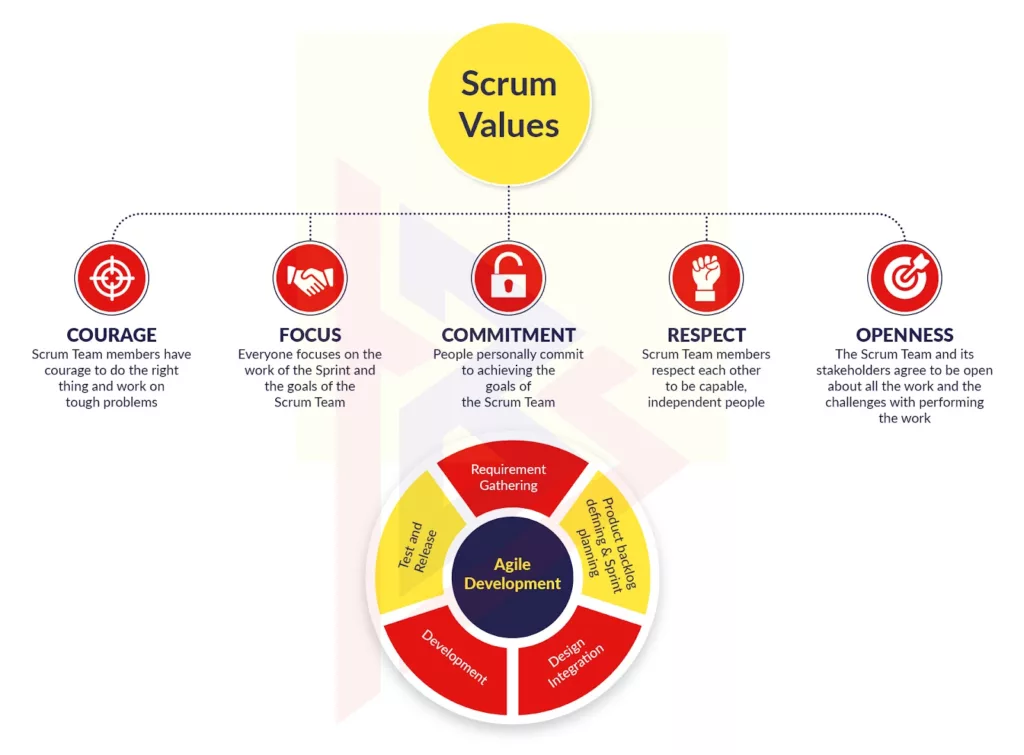
Difference between Agile & Scrum:
| Agile | Scrum |
| Agile software development is a group of software development methodologies that are based on iterative development. Requirements and solutions change over time as cross-functional teams work together. | Scrum is an agile approach implementation. In which the consumer receives incremental builds every two to three weeks. |
| It has been widely accepted that agile software development is well suited to environments with a small but highly skilled project development team | In projects with rapidly changing requirements, Scrum is ideal. |
| Leadership is crucial to the Agile process. Agile teams are careful not to take on more than they can handle, so they don’t overcommit. | The Scrum methodology fosters self-organization and cross-functionality. |
| The method is rigid compared to Scrum. As a result, frequent changes are not possible. | In addition to its flexibility, Scrum is able to react quickly to changes. |
| Collaboration and face-to-face interaction between cross-functional teams are integral to Agile. | Collaboration in Scrum is accomplished through daily stand-up meetings where the Scrum master, product owner, and team members each have a fixed role. |
| Organizational change and up-front development processes can be required when using agile development methods. | Implementing the scrum process does not require too many changes. |
| When using the agile method, it is essential to deliver frequent feedback to the end user. | Following each sprint, the client receives a build for feedback. |
| During the lifecycle of a project, each step of development, such as requirements, analysis, and design, is continuously monitored. | At the end of each sprint, the functionality is demonstrated. Before the next sprint, regular feedback can be taken. |
| In agile methods, all tasks are handled by the project head. | A team leader is not present, so all issues and problems are addressed by all members. |
| As part of the Agile method, the end user is encouraged to provide feedback throughout the process. This will result in a more practical end product. | During daily sprint meetings, the project is reviewed, and feedback is given to determine future progress. |
| Ensure that the software is regularly updated and delivered. | The next sprint can be planned when the team has completed the current sprint activities. |
| Simple design and execution are best. | Innovating and experimenting can be part of the design and execution process. |
| By continuously delivering valuable software, Agile prioritizes satisfying the customer’s needs. | As part of Scrum’s core philosophy, Empirical Process Control is implemented. |
| Progress is measured by working software. | It is not sufficient to have working software. |
| Face-to-face communication is best; such techniques can help you reach this goal. | Scrum teams strive to deliver maximum business value starting early in the project and continuing throughout. |
| Following are Agile principles: Even late in the development process, it’s okay if requirements change. Change is possible according to the competitive advantage of the customer using agile procedures.-Throughout the duration of the project; both business people and developers will be on-site every day. Agility is enhanced by focusing on technical excellence and the proper design to be more productive as a team; an agile team constantly adapts its behavior to the project’s needs. | Following are scrum principles:-Self-organization: This results in a more equitable distribution of responsibility within the team. It’s also an environment that encourages innovation and creativity, which is conducive to growth.-Collaboration: Collaboration emphasizes collaborative work. 1. awareness, 2. articulation, and 3. appropriation. It also sees project management as a collaborative process in which teams work together to provide the most value for the organization.-Time-boxing: An example of this principle can be found in the Scrum framework. Sprint planning and review meetings are critical components of time-boxed elements Development: This principle focuses on how to better manage change and create goods that meet the expectations of customers. Additionally, it establishes the organization’s obligations regarding iterative development processes. |
What is Agile Scrum Theory?
Scrum is laying on an empirical process control foundation. Therefore, knowledge comes from experience and making decisions based on knowledge. The scrum is incremental and iterative to optimize predictability and control risk.
The three pillars of empirical process control of Agile Scrum theory are transparency, Inspection, and adaptation.
Transparency:
Transparency is a common standard and is, shared with observers. So that observers can, share a common understanding of what can be, seen.
- All participants must share a standard process.
- Also, those who are going to work and inspect the increments must share a standard definition of “Done”
Inspection:
Scrum teams/users must continuously inspect scrum artifacts and progress toward the sprint goals to identify undesirable variances. However, do not conduct inspections frequently so that it becomes a way of working. Skilled inspectors perform it diligently.
Adaption:
If the observer realizes that one or more aspects of the process go outside acceptable limits. That may turn into a product that will be unacceptable. The process must be, adjusted accordingly.
There are 4 formal events for inspection and adaptation:
- Sprint Planning
- Daily Scrum
- Sprint Review
- Sprint Retrospective
Values defined by Scrum:
- Commitment
- Courage
- Focus
- Openness, and
- Respect
What Are Agile Scrum Roles?

The scrum team consists of a product owner, the development team, and Scrum Master. The scrum team is self-organizing and cross-functional. A self-organized team chooses how best to accomplish the work, rather than being, instructed by an outsider (one who is not a part of a team), while the cross-functional team has competencies required to complete the work without being dependent upon an outsider. However, the team structure design in Scrum optimizes flexibility, creativity, and productivity.
Product Owner:
- Clearly express product backlog items;
- Also, orders the items in the product backlog to achieve goals and missions;
- Optimizing the value of work the development team performs;
- Also, it ensures that the product backlog is visible, transparent, and clear to all the team members;
- Ensure that the development team has a complete understanding of the product backlog to the level needed.
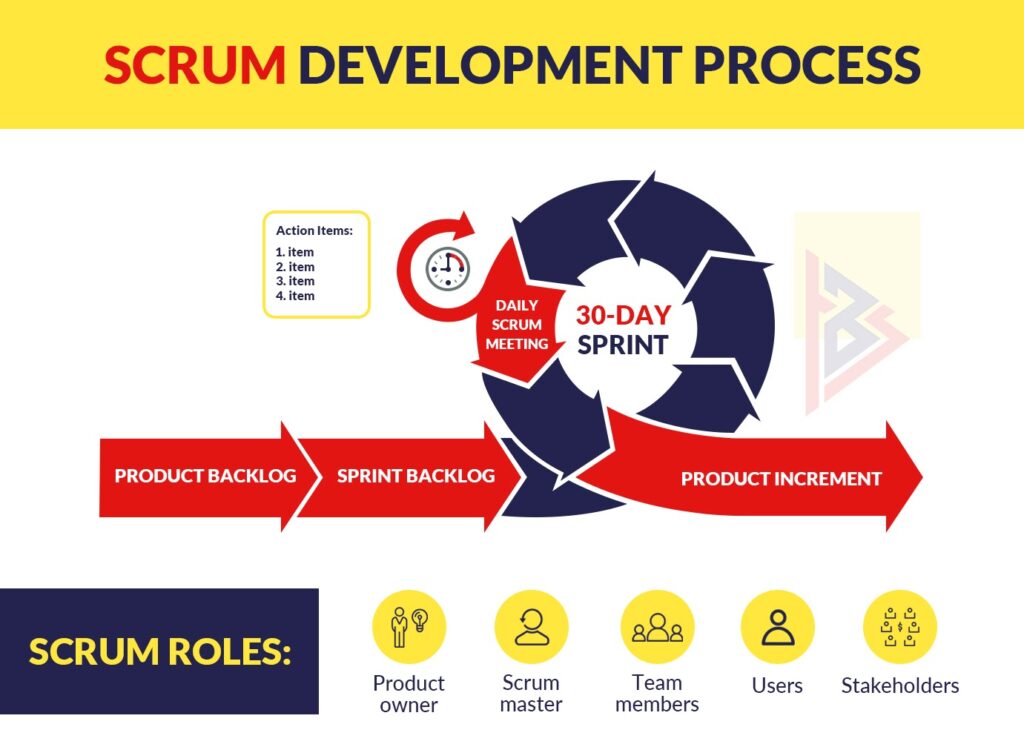
The Development Team:
- The team is self-organizing. No one can instruct the development team on how to turn product backlog into increments of potentially releasable functionality;
- The development team is cross-functional and has the required skills to accomplish the work within the sprint;
- The development team will not have a sub-team regardless of testing, architecture, operations, and business analysis.
- The Development team has unique skills and areas of focus, but they are accountable as a whole team, not as an individual.
Development Scrum Team Size:
The development team size should be small enough to execute work quickly and large enough to finish significant work within the sprint. The Product Owner and Scrum Master are not part of the development team unless they execute sprint items themselves.

Scrum Master:
- Everyone should understand the goal, scope, and product domain;
- Finding techniques to manage product backlogs effectively;
- Helping the team to understand the need for clear and concise product backlog items;
- Ensure product owners know how to arrange product backlog to maximize value;
- Understand and practice agility;
- Facilitate Scrum events as and when needed;
- The coaching development team in self-organizing and cross-functionality;
- Help the development team to create a high-value product;
- Remove hindrances to the development team’s process;
- Learning and coaching organization in its scrum adaptation;
- Planning scrum implementation within the organization;
- Helping employees and stakeholders understand empirical product development;
- Usually, the project manager is also the Scrum Master, but they can give that job to anyone on the team who is an expert in Scrum and a good leader.
What Are Agile Scrum Events?
Scrum framework consists of 4 events that are, time-boxed (Time-bound), such that every event has a maximum duration. Once a sprint begins, its duration becomes fixed, and neither can be, shortened or extended under any circumstances.
The Sprint
Sprint is the heart of Scrum, and the entire process and teams revolve around sprints. Each sprint has, a month or less duration within which a “Done”, usable, or potentially releasable product increment is, created. Each sprint is, considered a project with no more than a month. The scrum project team should meet daily to discuss how things are going.
The time that the scrum team works together to finish an increment is, called a “sprint.” A sprint usually lasts two weeks, but some teams find it easier to scope in a week or to deliver a valuable increment in a month. In the sprint planning meeting, the team decides which items from the product backlog will work on during the sprint. A sprint backlog can change throughout a sprint. But the main sprint goal—what the team wants to get out of the current sprint—cannot be, changed.
During the Sprint:
- No changes that impact the Sprint Goal
- Quality goals do not decrease
- As more learning happens, the scope is clarified and re-negotiated between the product owner and the development team.
What is Sprint Planning in Agile Scrum?
Sprint planning is a roadmap for executing sprints within the time box. It is the collective effort of the entire scrum team. The time-box is to a minimum of 8 hours for a one-month Sprint.
Daily Agile Scrum:
For 15 minutes, conduct a Daily scrum meeting. The development team will plan the work for the next 24 hours in this meeting. This will optimize team collaboration and performance by inspecting the work from the last scrum meeting and forecasting upcoming Sprint work. The Daily Scrum meeting happens same time and in the same place, reducing complexity.
Discussion Agenda:
- What did I do yesterday that helped the development team meet the sprint goal?
- What will I do today to help the development team meet the sprint goal?
- Do I see any hurdles that prevent my development team or me from meeting the sprint goal?
Sprint Retrospective:
The sprint retrospective is an opportunity for the scrum team to inspect itself. Then create a plan for improvements for implementation during the next sprint.
Agile Scrum Artifacts:
Scrum’s artifacts represent work or value to provide transparency and opportunities for inspection and adaptation.
Product Backlog
The Product Backlog is an ordered list of everything known to be, needed in the product. It is the single source of requirements for any changes to be, made to the product. The Product Owner is responsible for the Product Backlog, including its content, availability, and ordering.
Sprint Backlog
The Sprint Backlog is Sprint’s set of Product Backlog items, plus a plan for delivering the product increment and realizing the Sprint Goal. The Sprint Backlog is a forecast by the Web Development Team about what functionality will be in the next Increment and the work needed to deliver that functionality into a “Done” Increment.
Agile Scrum Methodology Benefits:
It is customary to deliver projects in phases that increase in certainty as the project progresses:
This approach, however, has many disadvantages:
- Customer requirements cannot be, changed easily
- It is a waste of time to build features that no one uses
- Feedback cannot be, given until the code is complete
- System stability isn’t, known until the end
When using the agile Scrum methodology, the key benefits are:
- Flexibility and adaptability – Due to the high-level nature of the requirements, which include features, user stories, and other backlog items, you have the opportunity to adjust the requirements from customer and user feedback ‘on the fly.
- Creativity and innovation – As opposed to working in separate ‘silos,’ Scrum allows cross-functional teams comprised of software engineers, designers, testers, and business/functional specialists to collaborate. As a result of this interdisciplinary cooperation, new ideas are born.
- Lower risks and costs – According to research, customers seldom use or benefit from the majority of features offered in traditional waterfall projects due to scope creep and feature bloat. Because of the constant pruning of the release backlog in Scrum, these features (and their accompanying expenses) are, quickly weeded out of the release backlog. Risks are less likely to arise during a sprint because of short-time boxes, which improves incremental delivery.
- Quality improvement – As a result of continuous exploration, continuous integration and delivery, test-driven development, DevOps, and relentless test automation, Scrum produces substantially higher-quality code products and processes.
- Organizational synergy – Scrum encourages cross-functional collaboration among team members from various specialties, ensuring that the final result incorporates the best of the company’s resources, not just those listed on their official job titles.
- Employee satisfaction – It’s no longer necessary to work in teams to complete projects with a predetermined scope and definite timeframe because the scope can be, adjusted while still delivering outcomes. A more sustainable pace of operation encourages staff to take pride in their work rather than stressing over meeting unrealistic goals and spending late nights replanning and retesting functionality.
- Customer satisfaction – Customers’ inability to understand a system’s functionality until they see it is one of the obstacles to software development. Delivering working features incrementally gives clients the confidence that they are getting the right product.
Who Can Benefit from Scrum?
Many businesses and projects can benefit from Scrum, and it is, employed in most software development projects where users and consumers can provide feedback in real time.
Many industries, including finance, banking and insurance, life sciences, transportation, and logistics, have adopted Scrum as their primary software development lifecycle. Scrum is, increasingly used in even the most traditionally waterfall-oriented industries, such as aerospace, defense, and automobiles. Iterative techniques are now more practical because of the capacity to update software in satellites and automobiles in real-time.
Even while Scrum allows you to develop and deliver new production-ready code in two-weekly sprints, certain businesses still require you to produce reports, documentation, and other paperwork to use that feature. Scrum’s adoption has been, limited in the past because of this in several sectors.
Regulatory documentation and paperwork are, increasingly being, defined as part of a product in agile Scrum projects. The mechanisms to generate this material automatically from the project teams are being, integrated into the products themselves. “Agile Compliance” is the term we use to describe this process.
Extreme Programming (XP)?
Kent Beck- hence the name- best programming practices were, taken to an extreme. There are no new ideas in XP, but their application and combination are what makes XP unique, or at least did in the early 2000s, which is when it first gained traction. An essential tenet of the XP philosophy is that projects should be flexible enough to accommodate the unique challenges they confront and to use only those approaches that prove effective. Since Scrum includes gaps in its definition that are, particularly well-suited to XP techniques, partial XP is now a viable option.
As with other agile methodologies, XP relies on tried-and-true practices, including short iterations, loosely defined requirements in the form of user stories until they are needed, frequent testing, close collaboration with stakeholders on-site, and team ownership of success or failure.
Due to stakeholder feedback and the required high degree of communication within the team, the XP team expects and accepts changes in requirements as necessary for Agile projects. To be able to work on and alter any part of the code, everyone must have a thorough understanding of the system as a whole. Using hastily written code is a common way to demonstrate concepts and test different designs. Short iterations allow for the regular addition of new functionality, which in turn encourages the use of refactoring to combine previously separate pieces of code into a single, more effective unit.
Taking testing to the extreme involves employing as many testing methods as feasible, as frequently as possible. Unit testing, acceptability testing, integration testing, and test-first development are a few techniques available today. TDD (test-driven development) and behavior-driven development are further examples of these methods (BDD).
An essential aspect of the XP philosophy is the concept of pair programming, which holds that two minds are better than one. Two people are working together on a single workstation, with one person writing code and the other providing feedback, pointing out potential issues, and thinking about the “big picture.” The roles are frequently flipped, and the two work together as if they were one. It is possible for a pair to become too comfortable with one another and begin to think alike, which defeats the point of the experiment. When this occurs, it’s best to separate the pairs and reassign them. Even while the number of people needed to do pair programming grows, it is an excellent way to ensure high quality, which is a vital component of the Agile ethos.
Finally, we arrive at simplicity. Simple remedies are promoted as long as the immediate problems are addressed rather than those that may occur in the future. However, this can lead to much reworking and redesign in the long run, which is suitable for everyone. Spike solutions, in which the team produces user stories to prove regions of most excellent technical or conceptual risk, are recommended to avoid architectural dead ends. To keep the system from becoming out-of-date and unable to meet future demands, iterative refactoring is implemented into each release.
XP’s adaptability is one of the reasons it’s so popular. Even though Scrum is more process-oriented, it’s easy to mix XP’s advantages with those of other techniques, such as XP.
Conclusion
TechnoBrains has mastered the scrum framework and uses it religiously to achieve great results. If you are tired of a relatively mid-sized project which has been running for years. You may contact us for agile scrum development. We will ensure we will streamline the entire process to enhance productivity and a great product at the end of the development process.
FAQ
Development Team members are the only ones allowed to attend daily scrums. For it to be done correctly, they must do the work. As long as it is helpful to the Development Team, the Scrum Master, the Product Owner, and any other stakeholder may attend as listeners.
It helps teams work together by providing them with a framework. Often described as an agile project management approach, scrum describes several meetings, tools, and roles that team members use to structure and manage their work.
The next step is establishing whether Scrum is the most appropriate Agile methodology for your project, assuming an Agile approach is right for you. Scrum projects typically lack clear requirements, are likely to experience change, and/or require frequent testing.
Development team members attend daily scrums. Therefore, It is not mandatory for the Scrum Master to attend.
